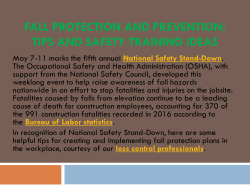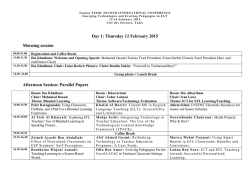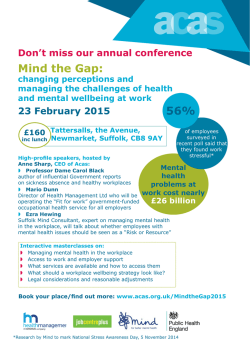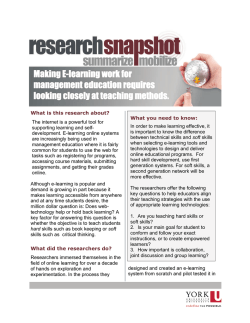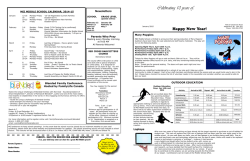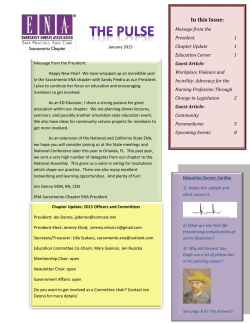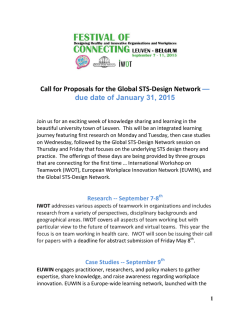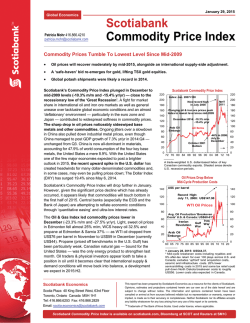
Blended Learning Makes Customizable Learning a Reality
Blended Learning Makes Customizable Learning a Reality What is this research about? Recently, there has been a growing interest in new strategies to empower learning in the Canadian workplace. Although still in its infancy, ‘blended learning’ brings together various approaches to teaching and learning, using a variety of Web technologies to create robust learning experiences that are both interactive and reflective. Blended learning strategies can support both individual and collective learning. They often blend face-toface interaction with a variety of synchronous and asynchronous technologies such as discussion boards, e-content, and conference calls. But, for the most part, research on blended learning tends to compare it to other forms of learning – such as online or classroom learning. There has been less focus on blended learning in the workplace. How does blended learning impact the development of ‘soft skills’ like coaching, teamwork, and critical thinking? How does it influence job performance? What did the researchers do? Funded by the Canadian Council on Learning, researchers at York University and Scotiabank teamed up to explore four different blended learning strategies. They had three goals: to validate the four different blended learning strategies; to deepen the understanding of how e-learning can be used effectively to maximize job performance in a Canadian workplace; to provide a solid platform for future blended learning research in the workplace. What you need to know: There is no single best, one-size-fits-all blended learning model for every organization or every employee when developing soft skills in the workplace. Instead, a ‘mass customization’ approach that honours the uniqueness of different organizations, learning cultures, and learners can create highly personalized learning paths that enable each and every employee to learn. In this way, blended learning strategies can be used to maximize personal and collective learning in the workplace. The researchers compared four different approaches to blended learning, which were offered to two hundred management employees, working in different parts of the world. What did the researchers find? The biggest – and most unexpected – finding is that individuals, sharing no common traits, excelled in each of the four different approaches to blended learning. In other words, no single ‘best’ approach for designing a blended learning strategy to advance soft-skills development in the workplace could be found. This reinforces our understanding of the uniqueness of each and every learner – especially in the workplace where personal experiences, needs, preferences, and abilities differ greatly. This, in itself, isn’t a new idea. What is new, however, is the way blended learning strategies can make a ‘mass customizable’ learning strategy – a blend tailored to the unique, highly specific needs of learners – a vibrant reality. Denys Lupshenyuk and Laura Mills are Doctoral Candidates at York. How can you use this research? Citation Teachers, researchers, and training and development professionals need to recognize that supporting individual and collective learning is a complex undertaking – even more so in the workplace where time is a scarce resource. Indeed, there needs to be a shift in organizational thinking about learning and skills development. To maximize the impact of learning, decisions shouldn’t be made for learners; rather, organizational learning experts should ask questions to find ways to support more of a learnercontrolled learning philosophy. Learners should be offered as much choice as seems reasonably possible – a much different strategy than our present classroom models that favour a one-size-fits-all approach. When blended learning is scheduled over time, in short sessions (i.e. 20-minutes a week for 6 weeks), it has a positive impact on job performance. Similarly, blended learning has a greater job impact when tightly linked to work projects. Its impact also increases when learning is evaluated, acknowledged, and rewarded in a meaningful way. But it is essential to continually re-evaluate programs, technologies and instructional-approaches to maximize learning impact. Adams, J. M., Hanesiak, R., Morgan, G., Owston, R., Lupshenyuk, D., & Mills, L. (2010). Blended learning for soft skills development: Testing a fourlevel framework for integrating work and learning to maximize personal practice and job performance. Toronto: Canadian Council on Learning. Available online at http://bit.ly/1nErBoI More details can be found at: http://bit.ly/1nEs1LU Keywords Blended learning, Soft skills, Workplace, Training, Development About the Researchers Jean Adams is Special Assistant Professor in the Schulich School of Business and Associate CoDirector of the Institute for Research on Learning Technologies at York University. [email protected] Rita Hanesiak is Senior Manager in Scotiabank Human Resources. Gareth Morgan is Distinguished Research Professor in the Schulich School of Business at York. Ron Owston is University Professor in Education and Director of the Institute for Research on Learning Technologies at York. Knowledge Mobilization at York York’s Knowledge Mobilization Unit provides services for faculty, graduate students, community and government seeking to maximize the impact of academic research and expertise on public policy, social programming, and professional practice. This summary has been supported by the Office of the Vice-President Research and Innovation at York and project funding from SSHRC and CIHR. [email protected] www.researchimpact.ca This work is licensed under the Creative Commons Attribution-Noncommercial-No Derivative Works 2.5 Canada License. 2010
© Copyright 2025
